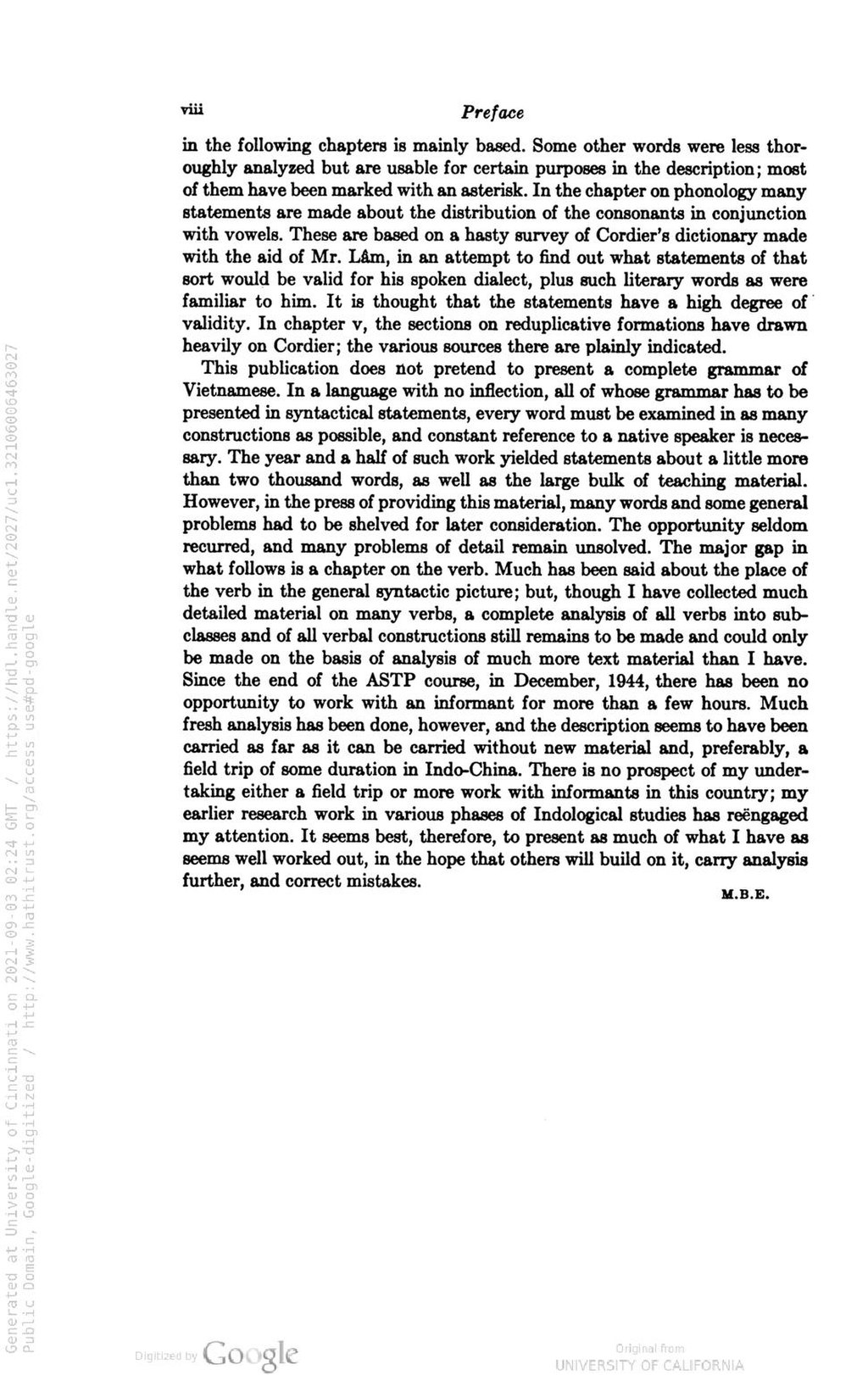in the following chapters is mainly based. Some other words were less thor- oughly analyzed but are usable for certain purposes in the description; most of them have been marked with an asterisk. In the chapter on phonology many statements are made about the distribution of the consonants in conjunction with vowels. These are based on a hasty survey of Cordier's dictionary made with the aid of Mr. Lâm, in an attempt to find out what statements of that sort would be valid for his spoken dialect, plus such literary words as were familiar to him. It is thought that the statements have a high degree of validity. In chapter v, the sections on reduplicative formations have drawn heavily on Cordier; the various sources there are plainly indicated.
This publication does not pretend to present a complete grammar of Vietnamese. In a language with no inflection, all of whose grammar has to be presented in syntactical statements, every word must be examined in as many constructions as possible, and constant reference to a native speaker is necessary. The year and a half of such work yielded statements about a little more than two thousand words, as well as the large bulk of teaching material. However, in the press of providing this material, many words and some general problems had to be shelved for later consideration. The opportunity seldom recurred, and many problems of detail remain unsolved. The major gap in what follows is a chapter on the verb. Much has been said about the place of the verb in the general syntactic picture; but, though I have collected much detailed material on many verbs, a complete analysis of all verbs into sub- classes and of all verbal constructions still remains to be made and could only be made on the basis of analysis of much more text material than I have. Since the end of the ASTP course, in December, 1944, there has been no opportunity to work with an informant for more than a few hours. Much fresh analysis has been done, however, and the description seems to have been carried as far as it can be carried without new material and, preferably, a field trip of some duration in Indo-China. There is no prospect of my under- taking either a field trip or more work with informants in this country; my earlier research work in various phases of Indological studies has reëngaged my attention. It seems best, therefore, to present as much of what I have as seems well worked out, in the hope that others will build on it, carry analysis further, and correct mistakes.
